A 4 day / 3 night extension from Hanoi into the far northern reaches of Yen Bai & Mu Cang Chai to explore and witness the spectacular golden rice harvest period of September - October




Golden Harvest of the North 4 day 3 night travel program PRIVATE TOURING
This 4 day program out of Hanoi takes the visitor to some of Northern Vietnam’s most stunning rice terraces. Whilst similar in content to our Water and Rice program, the focus here is on the sight and activity of the agricultural land in full harvest. Golden fields stretch as far as the eye can see, lighting up the valleys in striking colour. The view and walks here are gorgeous and the joy of the harvest on the local ethnic groups make it an almost festive time to be in the region.
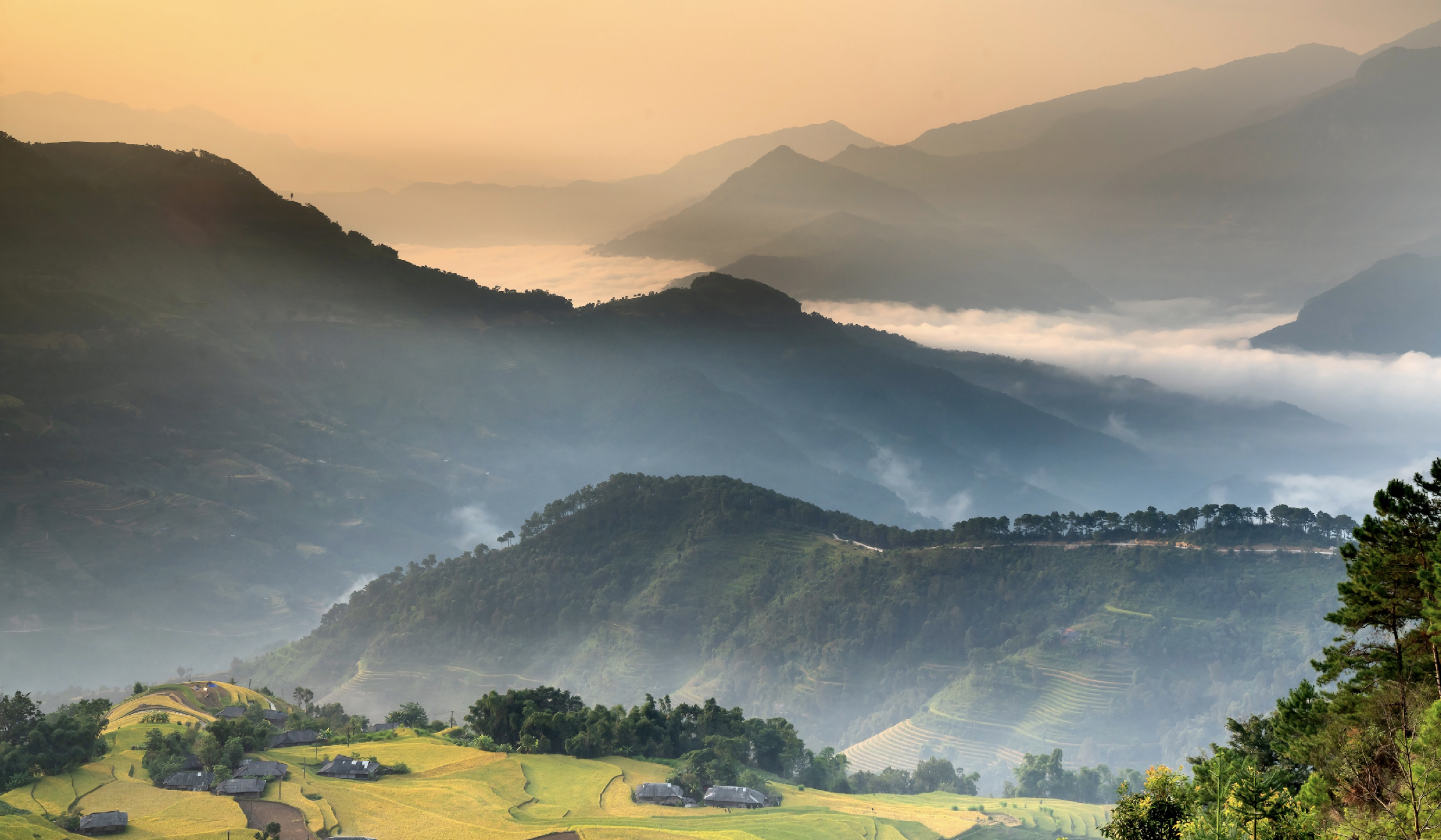
This morning we depart Hanoi for a 5.5 hour road journey to the Tu Le valley in Yen Bai province.
Once leaving the main township of Nghia Lo through to Tu Le the road passes through beautiful scenery of the Hoang Lien Son mountain range with sweeping views of vast rice plantations being planted or nurtured depending on the month of travel.
The township of Tu Le is small but surrounded by an ethereal landscape that provides an ideal base for the next few days to explore the dramatic rice terraces of Mu Cang Chai and vicinity. Our accommodation, the comfortable and pleasant Le Cham Tu Le Resort, is the best lodge in the region.
We check in and enjoy a late lunch at the property. On a hot afternoon we may like to cool down with a swim at the pool overlooking the valley below before we begin our exploration of the area. On cooler days, the local thermal pools will beckon.
From Tu Le, a short 5km road journey takes us to Lim Mong where we descend into the valley and follow endless trails through rice fields and village farming communities.
The road to Lim Mong crosses a Thai ethnic village near the Nam Co stream, in accordance with the customary settlement and living of the Thai people, near the source of water.
A dirt road on the other side of the water takes us to Liang Mong (this can be hard to transverse after and during heavy rain so our plans may alternate on the day). At the flank of the mountains here are H’mong villages who go about their day tending to the fields. In the harvest season, we will will be distracted by the unparalleled beauty of the area.
In the late afternoon the wind rustles the waves of rice. Young children call each other bringing the buffalo home and H’Mong women carry their young children back to the village. Visitors are few and far between in these parts but the local villages are always welcoming. Whilst there is no fixed agenda here, we take our time wandering through the fields and stopping to chat to passers by. As the sun fades behind the mountains we take our short journey back to Tu Le and enjoy an evening at the lodge.
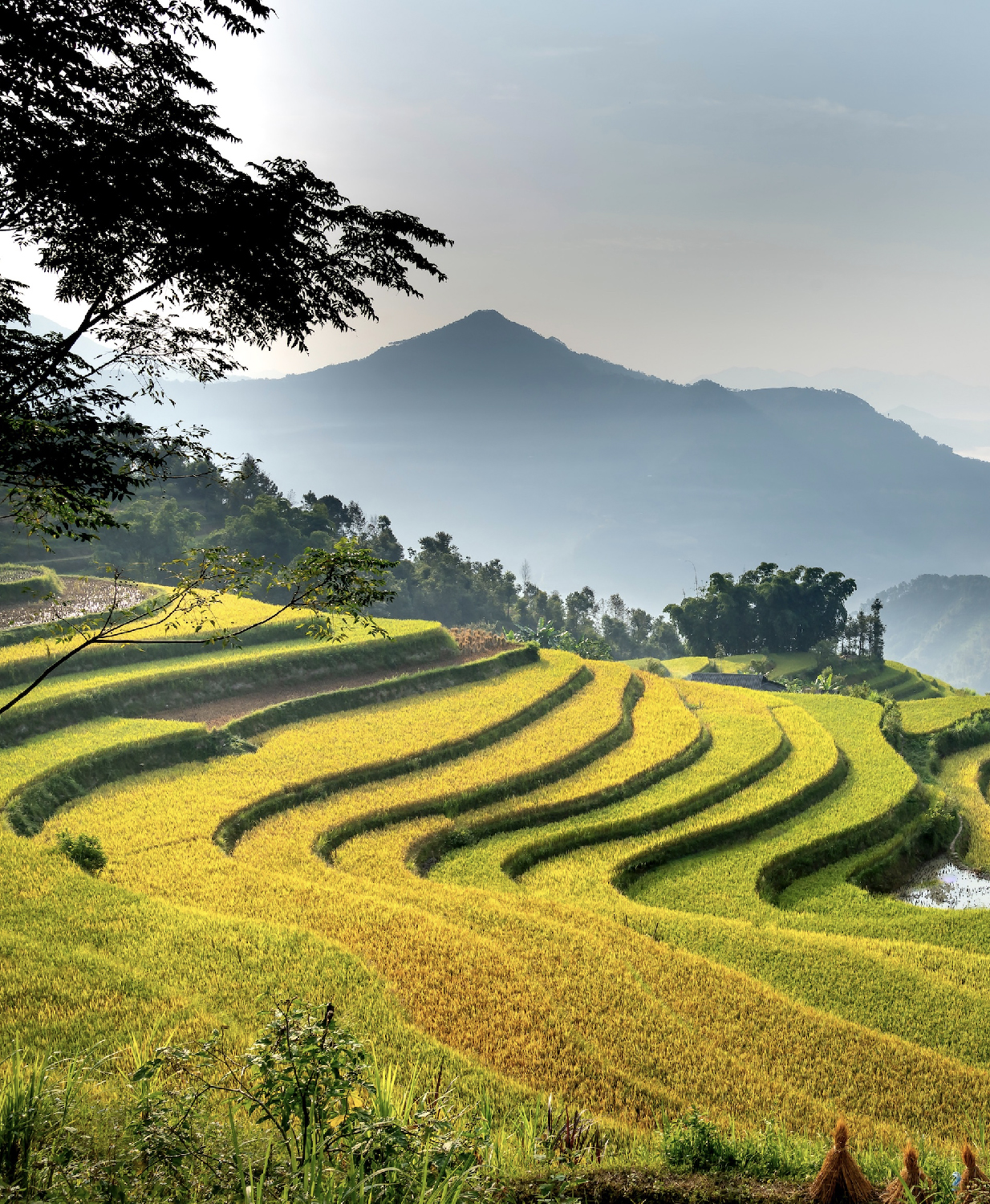
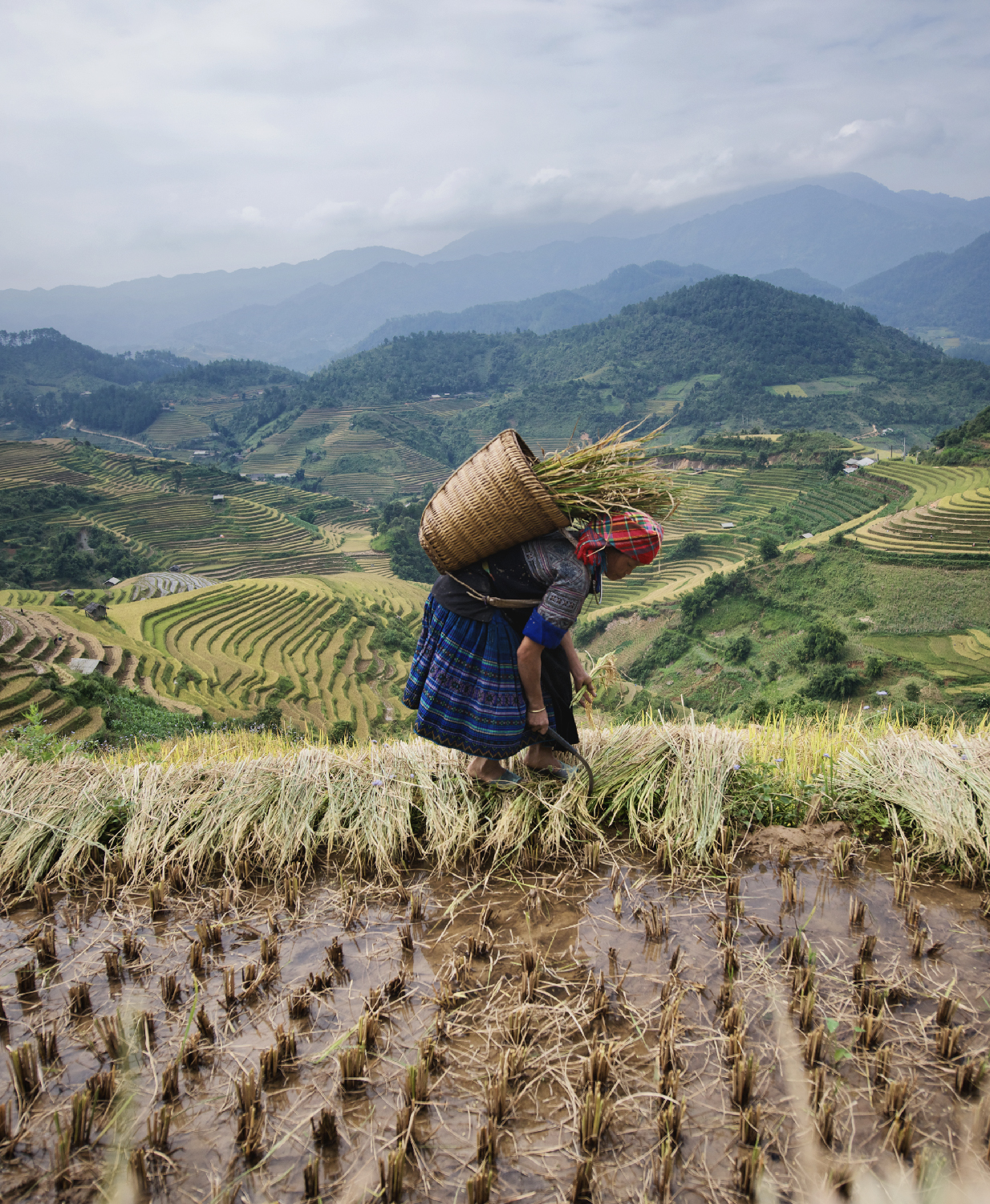
In the morning, we leave the lodge and commence our one hour winding road journey to Mu Cang Chai.
Mu Cang Chai’s fabulous rice terraces are one of the most extraordinary landscaped sites in Southeast Asia and are recognised by the Ministry of Culture as a region of paramount significance. These extraordinary sculptured terraces are visible from the road, rightly called "the photographers' road", the famous national road 32 which connects Tu Le village and Mu Cang Chai via the Khau Pha pass, one of the four largest mountain passes in the country.
The ascent of the pass from Tu Le offers breath-taking panoramas over large expanses. From this pass, we may see paragliders soaring in the air as the peak of the pass is a favoured point in which to leap from.
En-route to the district centre we pause at the turn off to La Pan Tan village, with one of the areas most stunning vistas and series of rice terraces. For the active and inclined there is a 10km walk from La Pan Tan through to Che Cu Nha passing village to village, providing the most visually rewarding walk in the region.
Please discuss with your Travel Expert the day before in order to make necessary arrangements (clothing, heat protection, water, food etc…). For those who prefer a shorter walk, your Travel Expert will guide you through the village and vicinity for the best vantage spots. A picnic lunch is provided, either on the trail or at a peaceful stop off the main road.
Whilst the nearby township of Mu Cang Chai itself has little to offer, if our visit is timed right we can stop at the local ethnic fair market (days vary). In addition to the purpose of buying, selling and exchanging goods, the fair is also a place for cultural exchange of the ethnic minorities. The items sold at the fair are plentiful, but are mainly the products of the mountains or the goods made by the local people such as honey, shiitake mushrooms, wood ear fungus, paddy, corn, soybeans, vegetables, brocade … The Hmong men traditionally wear plain black clothes, while the women proudly wear their brightly coloured outfits distinctive to their ethnic group.
Allowing for impromptu stops and exploratory walks, we aim to return to Tu Le in the late afternoon/early evening dependent on weather.
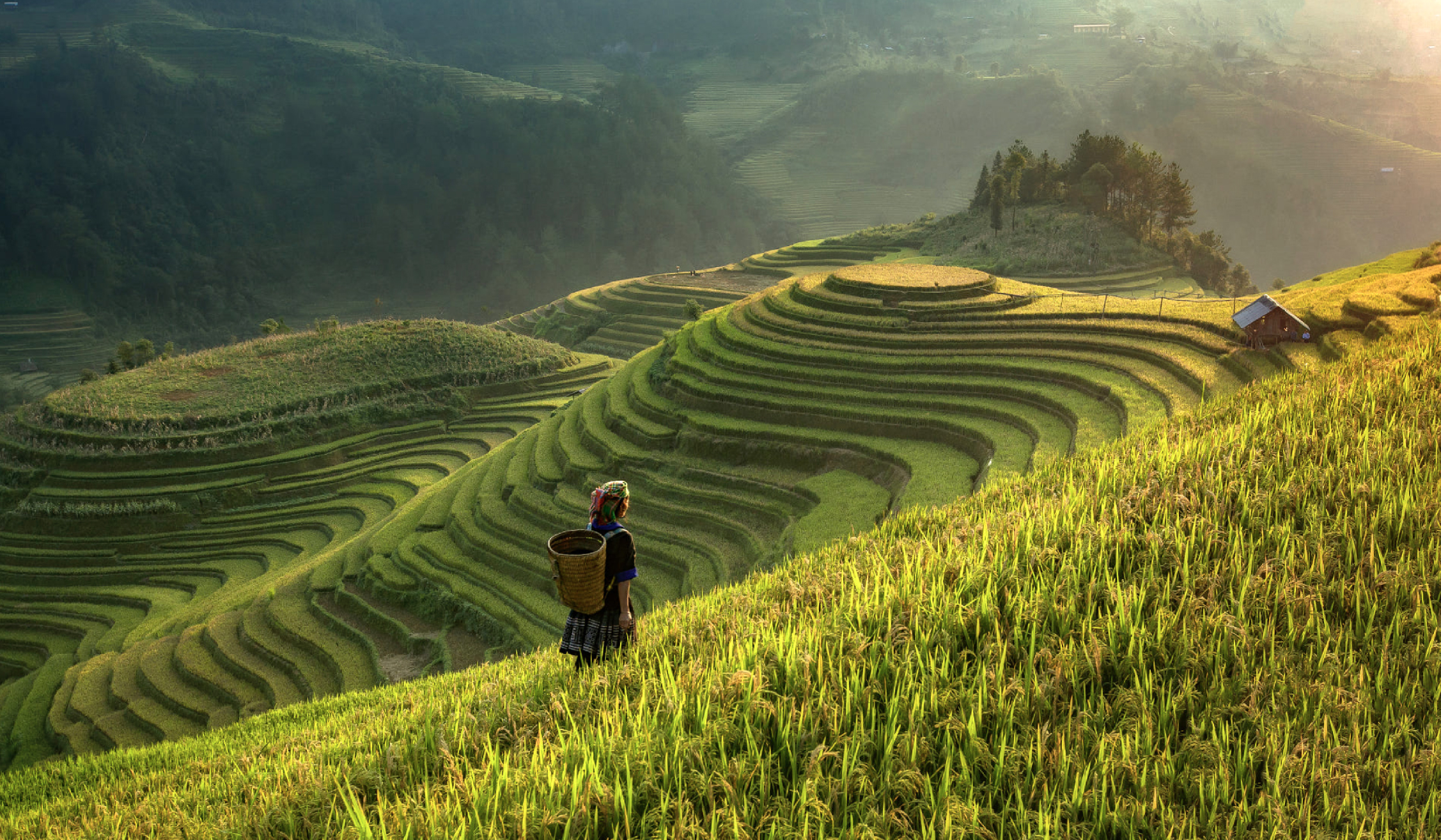
Note: We always recommend a third day in these mountainous regions, only for the reason that weather conditions can change quickly and one rainy day can turn into a hot dry one the next so we have a higher degree of flexibility in changing plans to ensure the maximum enjoyment and experience from this program.
If we hadn’t been able to visit Che Cu Nha village yesterday, we will plan to do so today and continue our exploration of the Mu Cang Chai region. The third most spectacular village area is De Xu Phinh where additional walks can be arranged. These two villages themselves incorporate over 700 hectares of terraced rice fields, ablaze in golden yellow as the fields are harvested.
These rice terraces are a mighty system of irrigation and water management that are fiercely rooted in the depths of the Hmong culture. The water in the terraces comes from the upper streams and waterfalls.
When there are low points in the mountain, it is important to overcome this problem by moving the water from the highest places. The bamboo is then cut in half and used as a means of transferring water by natural gravity to the terrace.
According to the experience of the Hmong people in this matter, the water is routed to the first terrace and then an east opening to irrigate the lower terrace.
This process avoids flooding the fields and preserves the fertility of the soil. This type of agriculture has allowed the Hmong to increase the cultivable area on steep and rugged mountainous terrain and better conserve water. Further insight into daily life and cultural exchanges will be a rich part of our experience today as we continue to explore the H’mong and lowland Thai villages of the region.
Mu Cang Chai is not all rice terraces and bucolic villages however. Located 20kms from town lies a 60 year old bamboo forest with hundreds of thousands of trees standing straight like a real-life swordplay movie scene. Located in Pung Luong commune, the forest covers an area of more than one hectare and is unspoilt (although popular for local visitors). Paths, steps and walkways guide us through the depth of the forest.
Note: As the road here can be impassable after rain a visit here only remains optional on the day. Return to Tu Le in the late afternoon for some pool time or perhaps lounging on your private deck watching the sun fade across the golden valley below.

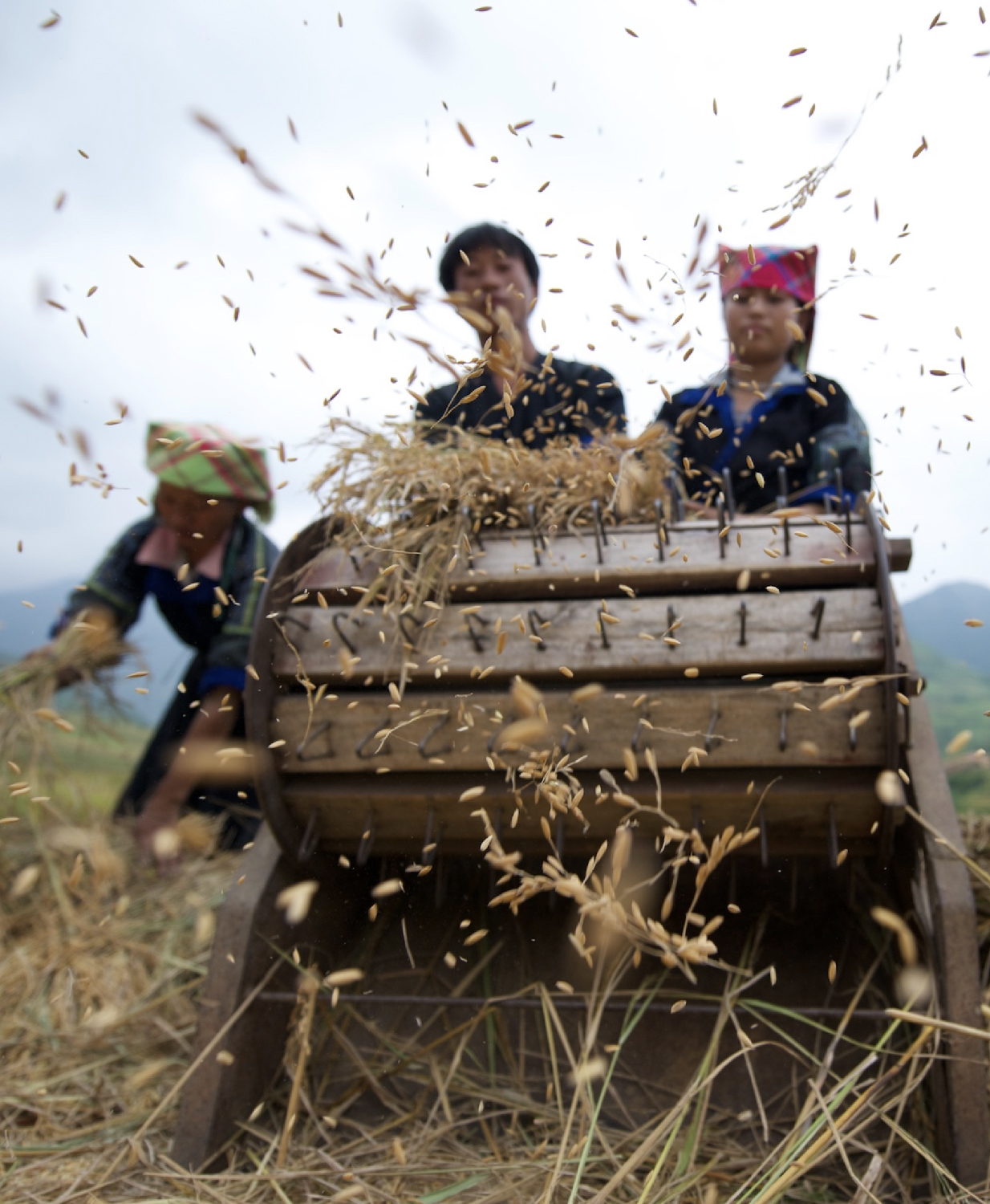
A morning to be spent at leisure today, enjoying the last of the serenity of the Tu Le valley. Your Travel Expert will collect you from the lodge at a time of your choosing (prior to noon) and begin our return journey back to Hanoi (or elsewhere in the region).
PROGRAM CONCLUDES
![]()
End Note: If the travel period does not fit in with in the September/October harvest season, it may be worth considering a similar program during the rice planting season (April/May) which is equally as beautiful for different reasons.
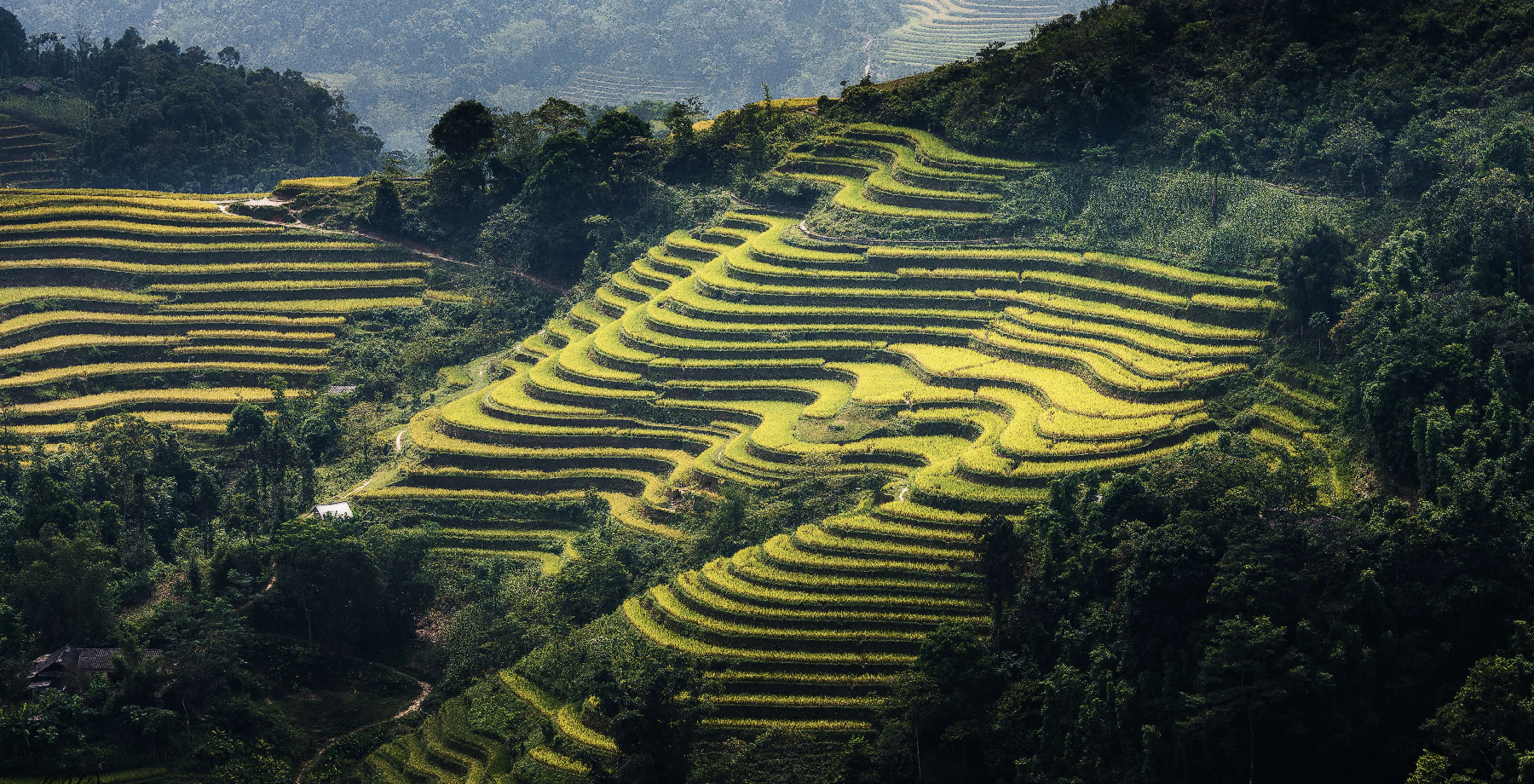
Travel Designer Insights
One of the most spectacular yearly events and sites in Vietnam is still very much a local affair. It may have something to do with the distance from Hanoi and the limited infrastructure as there are no high quality hotels here (but very comfortable for a couple of nights). However, if you find yourself in Vietnam during this period a visit to Mu Cang Chai, Yen Bai, Hoang Su Phi, or any of the far northern areas, will undoubtedly be a highlight. The colours and mountainous terrain alone are striking enough, but this visual treat is often accompanied by engagement and cultural exchanges with the local ethnic groups that inhabit these rugged landscapes. Be prepared to jostle with Vietnamese photographers who arrive here during the harvest season for the visual feast that provides the scene for many a spectacular image.
Click to hear your Travel Designer discuss the merits
and attractions of this Program

TRAVEL INSPIRATION
VIETNAM
STORIED IMAGERY ON THE DESTINATION

BE INSPIRED
VIETNAM
VIDEO PLATFORM
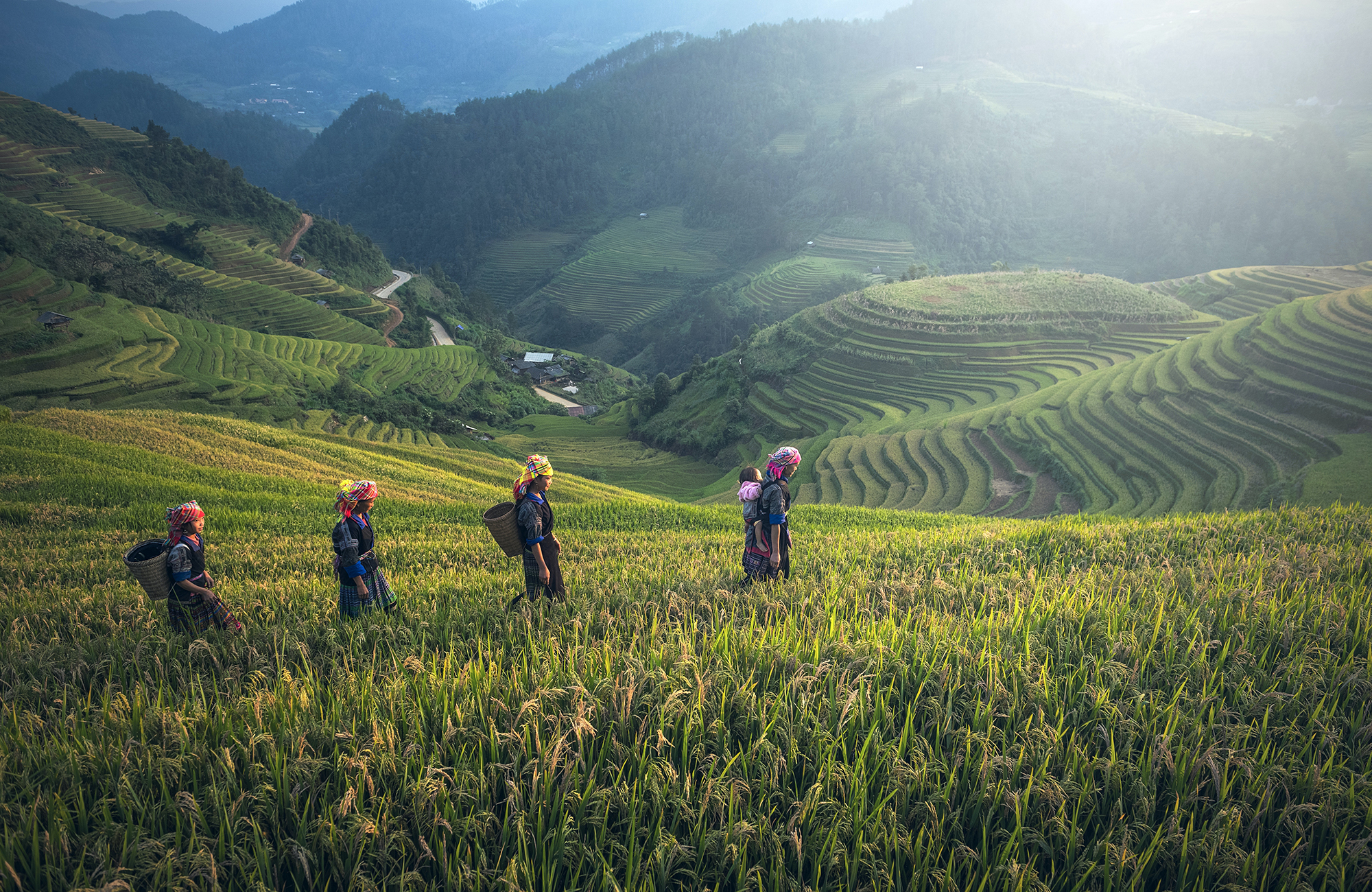
IMAGE BANK
VIETNAM
HIGH QUALITY VISUALS FOR DOWNLOAD
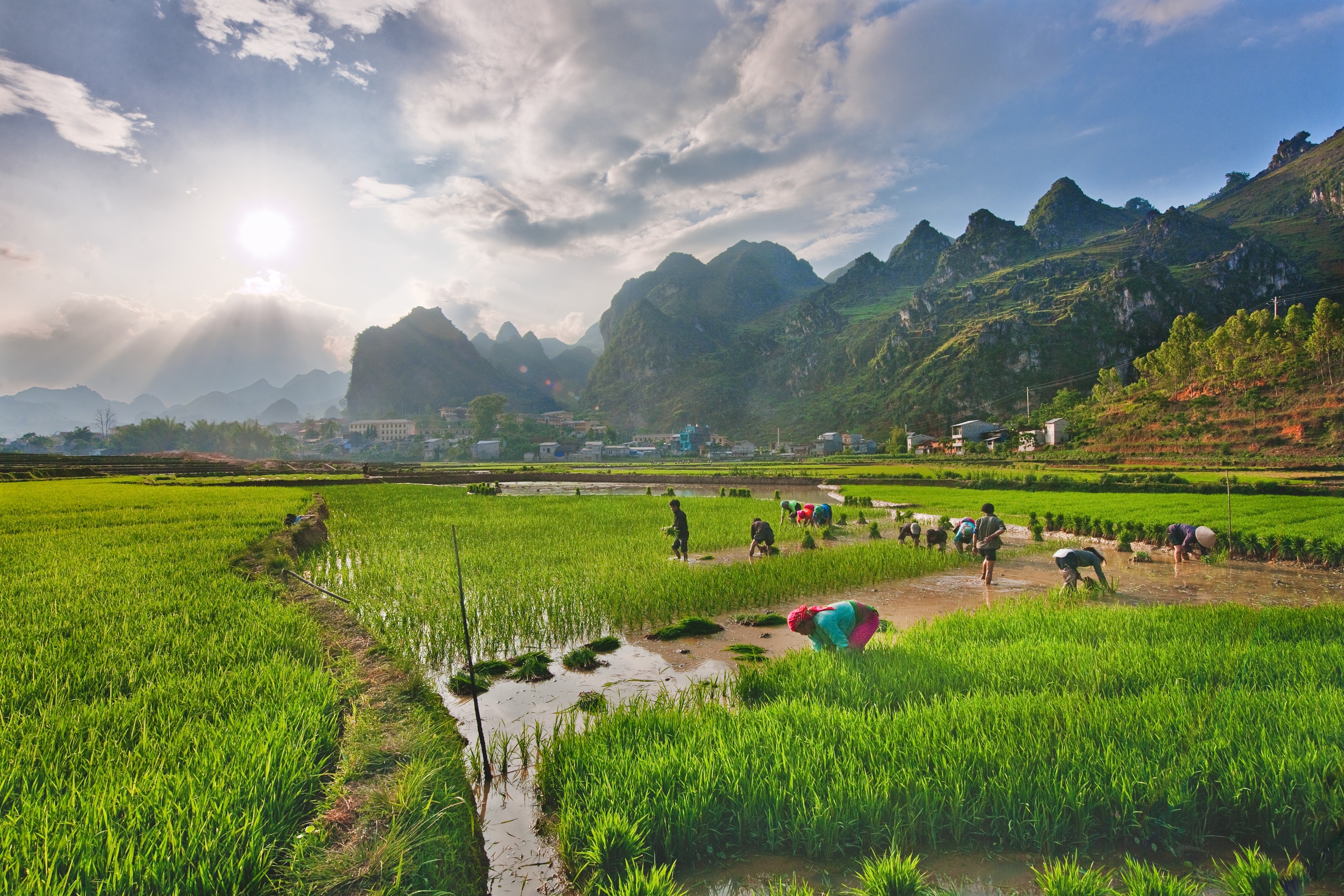
TRAVEL PORTFOLIO
VIETNAM
DISCOVER OUR PRODUCT RANGE
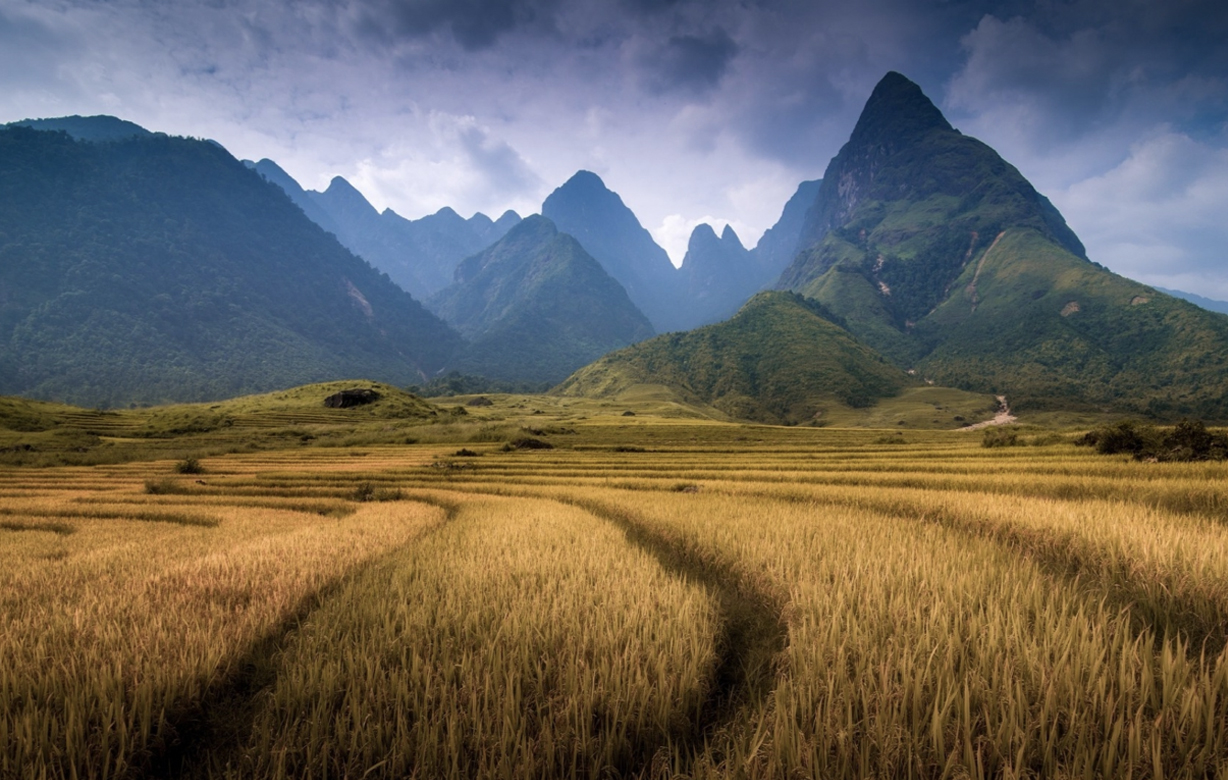
SUPPORT TOOLS FROM THE ASIA CONCIERGE WEB PORTAL
Asia Concierge (Vietnam) Ltd
Hoang Dan Building, Level 4
12M Nguyen Thi Minh Khai, Da Kao Ward, District 1,
Ho Chi Minh city,
Vietnam
Tel: +84 (0) 28 6270 6823
